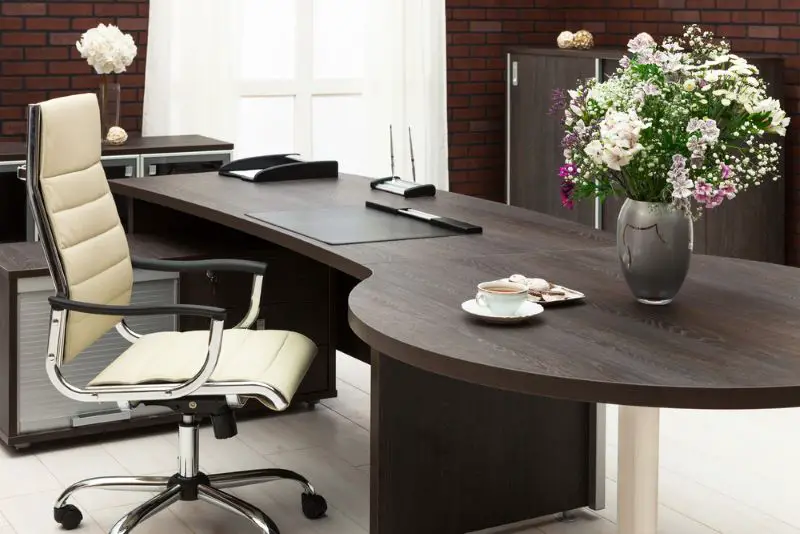Click here to get this post in PDF
Selecting the right office chair is critical for ensuring comfort, productivity, and health in the workplace. With a variety of office chair types available, each offering different features and benefits, it can be challenging to decide which one is right for you. This guide will help you compare the most common types of office chairs, providing the information you need to make an informed choice.
1. Task Chairs
Overview
Task chairs are designed for general office use and are commonly found in many workplaces. They are usually lightweight, easy to move, and offer basic ergonomic features.
Features
- Adjustable Seat Height: Allows users to position the chair at a comfortable height.
- Swivel Base: Enables easy movement and access to different parts of the workspace.
- Basic Lumbar Support: Provides some lower back support, although it may not be as comprehensive as more advanced ergonomic chairs.
Best For
Task chairs are ideal for short to medium-length periods of sitting and are suitable for a variety of office tasks. They are a versatile and affordable option for general office furniture needs.
2. Executive Chairs
Overview
Executive chairs are larger and more luxurious than task chairs, often featuring high backs, ample padding, and premium materials. They are designed to provide maximum comfort and support.
Features
- High Backrest: Supports the upper back, neck, and head.
- Luxurious Materials: Often upholstered in leather or high-quality fabric.
- Comprehensive Ergonomics: Includes advanced features such as adjustable lumbar support, tilt mechanisms, and padded armrests.
Best For
Executive chairs are ideal for individuals who spend long hours at their desks and prefer a chair that offers both comfort and a professional appearance. They are commonly used by managers and executives.
3. Ergonomic Chairs
Overview
Ergonomic chairs are specifically designed to support the body’s natural posture and reduce the risk of discomfort and injury. They offer a wide range of adjustments to cater to different body types and preferences.
Features
- Adjustable Lumbar Support: Can be positioned to match the natural curve of the spine.
- Seat Depth Adjustment: Ensures the seat provides proper thigh support without putting pressure on the knees.
- Multifunctional Armrests: Adjust in height, width, and angle to provide optimal arm support.
- Tilt Mechanisms: Allow for reclining and adjusting the angle of the backrest.
Best For
Ergonomic chairs are perfect for individuals who prioritize health and comfort, especially those who spend long hours sitting. They are ideal for anyone who wants to prevent back pain and maintain good posture.
4. Mesh Chairs
Overview
Mesh chairs feature a breathable mesh backrest that promotes airflow, keeping the user cool and comfortable. These chairs are often lightweight and provide good support.
Features
- Breathable Mesh Back: Keeps the user cool by allowing air to circulate.
- Ergonomic Design: Often includes lumbar support and adjustable features.
- Lightweight Construction: Easy to move and adjust.
Best For
Mesh chairs are ideal for hot or humid environments and for users who appreciate a cooler sitting experience. They are suitable for a range of office tasks and are a popular choice for modern office furniture setups.
5. Drafting Chairs
Overview
Drafting chairs are designed for use with high desks or drafting tables. They are taller than standard office chairs and usually come with a foot ring for added support.
Features
- Adjustable Height: Allows the chair to be used with taller work surfaces.
- Foot Ring: Provides a comfortable place to rest the feet.
- Swivel Base: Facilitates easy movement and access to different parts of the workspace.
Best For
Drafting chairs are ideal for architects, artists, and anyone who works at a higher surface. They are perfect for tasks that require a combination of sitting and standing.
6. Kneeling Chairs
Overview
Kneeling chairs promote an open hip angle by encouraging the user to sit in a kneeling position. This design can help reduce lower back strain and improve posture.
Features
- Open Hip Angle: Promotes better posture and reduces spinal pressure.
- Cushioned Knee Rest: Provides comfort while kneeling.
- Forward-Tilted Seat: Helps align the spine and improve posture.
Best For
Kneeling chairs are suitable for individuals who experience lower back pain or want to promote better posture. They are often used as an alternative seating option to traditional office chairs.
7. Balance Ball Chairs
Overview
Balance ball chairs incorporate a stability ball as the seat, encouraging active sitting and engaging the core muscles. They can help improve posture and increase energy levels.
Features
- Stability Ball Seat: Promotes active sitting and engages core muscles.
- Removable Base: Some models include a base for added stability.
- Height Adjustability: Allows for adjustments to fit different desk heights.
Best For
Balance ball chairs are ideal for individuals looking to incorporate more movement into their sitting routine and improve their posture and core strength. They are often used as a secondary seating option.
Choosing the right office chair involves understanding the specific needs and preferences of the user. Whether you prioritize ergonomics, luxury, breathability, or active sitting, there is an office chair designed to meet your requirements. Investing in the right office furniture, particularly a well-suited office chair, can make a significant difference in comfort, productivity, and overall well-being. By carefully considering the features and benefits of each type of chair, you can select the perfect seating solution for your office space.
You may also like: Sit Less Move More- Office Desk Exercise to Improve Posture
Image source: Depositphotos.com

